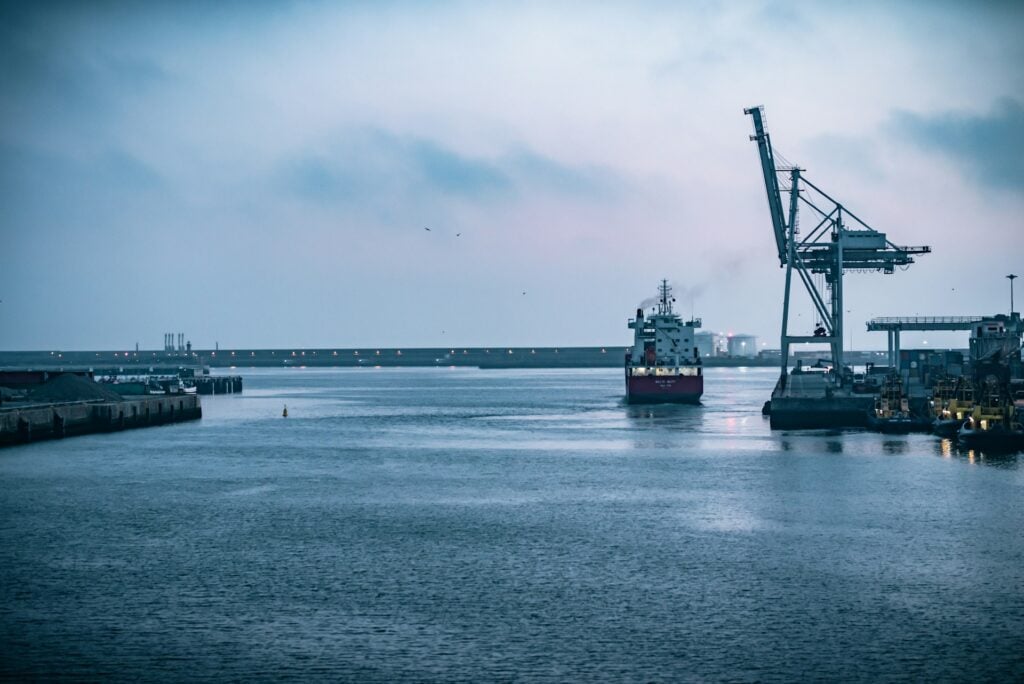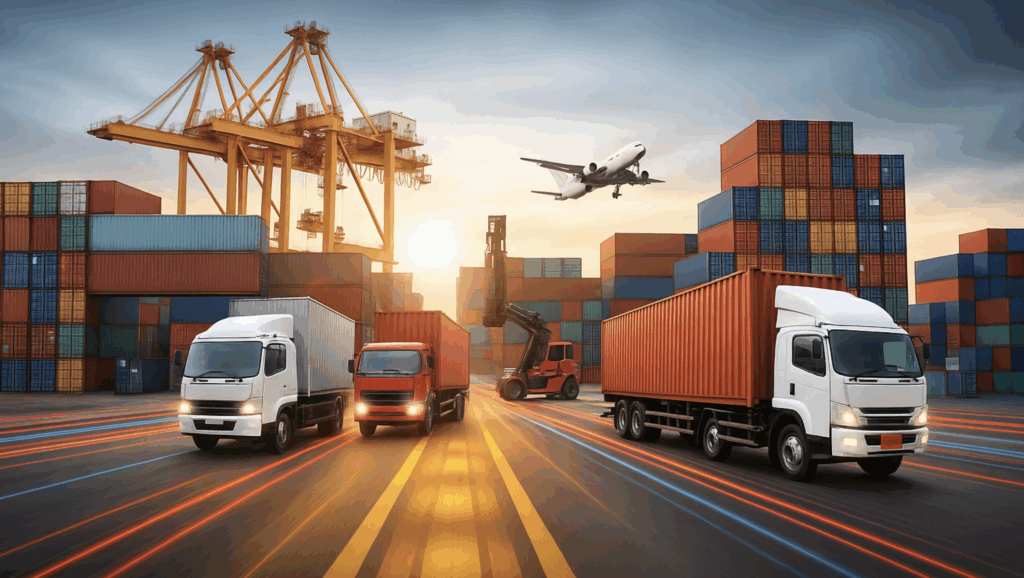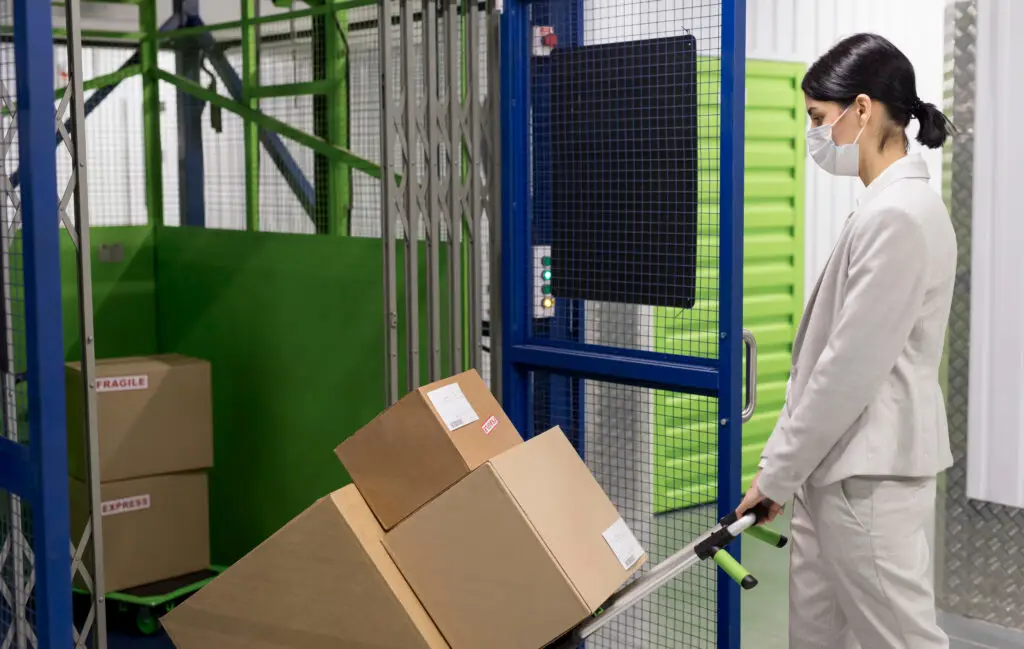Accurately tracking CO2 emissions is an essential step toward sustainability in maritime logistics. With shipping contributing approximately 3% of global greenhouse gas (GHG) emissions annually, the industry faces increasing scrutiny from regulators, stakeholders, and consumers alike.
Tools like Dockflow’s emissions tracking enable companies to meet stringent compliance standards, optimize operational efficiency, and align with international sustainability goals. By leveraging advanced technology, Dockflow helps businesses transform shipping into a greener, more transparent process while enhancing their competitive edge.
Why Tracking CO2 Emissions in Shipping is Crucial
The Environmental Impact of Shipping
Shipping is responsible for approximately 3% of global greenhouse gas (GHG) emissions annually, equivalent to over 1 billion metric tons of CO2. The heavy reliance on fossil fuels, such as heavy fuel oil, contributes significantly to this environmental burden.
Maritime logistics CO2 emissions are a major concern, especially as global trade continues to expand. Tracking CO2 emissions in shipping, in other words, is not just a regulatory necessity but a moral imperative.
By calculating emissions accurately, shipping companies can align their operations with international sustainability goals, such as the Paris Agreement’s commitment to limit global warming to 1.5°C.
Accurate emissions data enables targeted actions to reduce emissions and transition towards alternative fuels, ultimately cutting emissions across the supply chain.
Regulatory Drivers for Emissions Tracking
The Corporate Sustainability Reporting Directive (CSRD) mandates that EU member states’ companies report on environmental impacts, including carbon dioxide emissions from international shipping.
Alignment with the European Sustainability Reporting Standards (ESRS) and the EU Taxonomy ensures that shipping companies adhere to standardized reporting frameworks.
Moreover, the International Maritime Organization (IMO) enforces carbon intensity regulations, urging bulk carriers and other ship types to improve fuel efficiency and adopt sustainable practices.
These regulations drive the adoption of emissions reduction measures across maritime logistics.
How Dockflow Enables Accurate CO2 Emissions Tracking
Real-Time Visibility Across Shipping Modes
Dockflow’s platform provides real-time monitoring of carbon emissions for all shipping modes, including ocean, road, rail, and air freight.
By leveraging GPS and AIS (Automatic Identification System) data, Dockflow tracks carbon intensity across the logistics lifecycle.
Whether shipping via bulk carriers or intermodal freight, the platform captures precise emissions data for improved decision-making.
Integration with European Reporting Standards
Dockflow simplifies compliance by automating sustainability reporting processes. The platform aligns seamlessly with CSRD requirements, ensuring companies report emissions data in a standardized digital format.
Dockflow also adheres to guidelines from the Financial Reporting Advisory Group (EFRAG), enabling accurate alignment with ESG reporting standards and the EU Taxonomy.
Leveraging AI and Data for Precision
Combining advanced AI, smart sensors, and predictive analytics, Dockflow empowers shipping companies to optimize routes and reduce emissions.
By analyzing factors like ship type, fuel oil consumption, and cargo weight, the platform recommends actions to reduce emissions, such as adopting alternative fuels or optimizing fuel usage.
Benefits of Using Dockflow for CO2 Emissions Tracking
Simplified Compliance with CSRD and ESG Reporting
Dockflow automates the reporting process, ensuring companies meet all CSRD and ESG reporting requirements effortlessly. This reduces the administrative burden while maintaining accuracy and transparency in emissions data.
Enhancing Operational Efficiency
By identifying inefficiencies and minimizing unnecessary fuel consumption, Dockflow helps shipping companies lower costs and reduce their carbon footprint. Real-time insights enable proactive decision-making, cutting emissions throughout the supply chain.
Offsetting Solutions Through Partnerships
Dockflow partners with organizations like mintBlue, GreenSee, and GoForest to offer reliable offsetting solutions. These partnerships enable companies to compensate for their carbon footprint through verified offset programs.
How to Calculate CO2 Emissions with Dockflow
Calculating carbon emissions is almost effortless with Dockflow! Here’s a quick step-by0-step guide:
Step 1: Input Shipment Data
Begin by entering key details into Dockflow’s platform, such as mode of transport, shipment distance, cargo type, and ship type. These parameters form the basis for precise emissions calculations.
Step 2: Track in Real-Time
Monitor emissions throughout the shipment lifecycle with Dockflow’s real-time visibility tools. The platform provides constant updates on carbon intensity and fuel consumption, ensuring accurate tracking.
Step 3: Access Detailed Reports
Generate comprehensive CSRD-compliant reports directly from Dockflow’s dashboard. These reports include all required data points, from emissions per shipment to total carbon footprint, ready for ESG and regulatory submissions.
Final Thoughts on CO2 Emissions Tracking with Dockflow
Dockflow empowers shipping companies to take control of their environmental impact.
By providing precise, real-time data and actionable insights, Dockflow enables businesses to reduce their carbon footprint, comply with stringent regulations, and gain a competitive edge.
In an industry facing increasing scrutiny, emissions tracking is not just a requirement, it’s a pathway to a sustainable future for maritime logistics.





